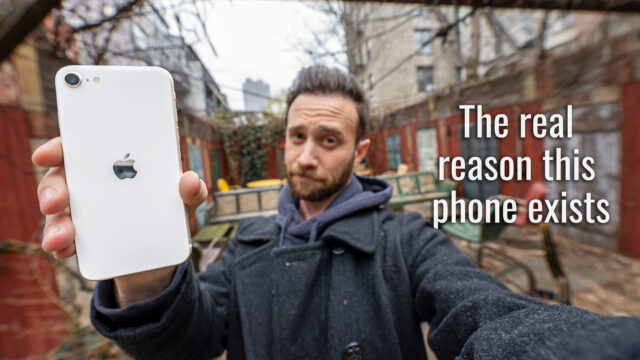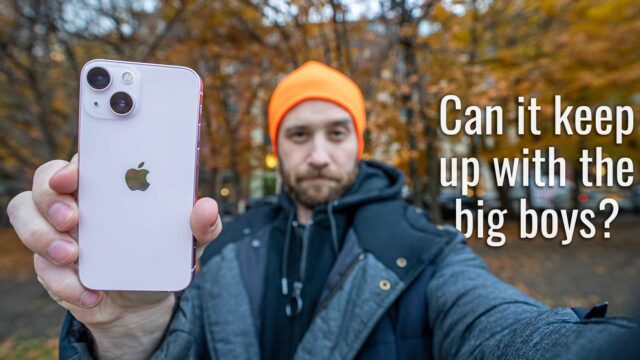Here’s How the Company That Inspired Apple is Inspiring the Future of Product Design
Braun holds a product design competition every year in Frankfurt, Germany. They invited me this year to check it out, and it turns out they might be the inspiration for a ton of Apple’s iconic products. Let me explain.
It happens to be morning in Frankfurt, Germany. I was just in Berlin for IFA and Braun asked if I would join them over here instead to check out something I’m actually excited about.

It was originally created to help stimulate a public discussion about design and it’s importance back when the design was often an overlooked topic.
Today it’s more about promoting the work of young designers since we’re all a bit more design conscience nowadays.
But that’s tomorrow. Today, were at the Braun House where Braun has taken products from their archive to show us. And I know what you’re thinking, how many razors can you fit in a house.
It turns out though that even though Razors are a huge part of their business today they’ve created and even pioneered the designs of so many different products.
From blenders, to toasters, to kettles, coffee machines, watches, thermometers, the first ever radio/record player combo, the first custom-made LCD on a watch, one of the first digital alarm clocks, the first automated slide projector to, of course, the first ever electric shaver to feature a steel foil over the cutting block (a design copied by other manufacturers the world over and still used by Braun and others to this day even though it was designed by Braun in 1938.
And the thing that amazes me is that through all of the items they showed us in the Braun house and their archives which we got to visit later, a lot of them looked like they could be in use today. Look at these kitchen appliances, and tell me you don’t want this record player (all of which were designed in the 50’s by the way).
Now, if you are a design student, you already know where I’m going next and the next name I’m going to say, you already knew was coming: Dieter Rams.
Rams was a designer at Braun in the 50’s and eventually became the head of design for Braun in 1961 and kept that role until his retirement in 1995.
During that time, he became a key figure in the German design renaissance of the 50’s and 60’s and he even came up with a set of ten design principles, that are taught to this day in design school and even used as a guide by some of the most iconic design companies of our current time. Including one, I think you’ve heard of Apple.
Jony Ive, the head of design at Apple has widely praised Rams in the past saying that his work was “bold, pure, perfectly-proportioned, coherent and effortless.” And saying that, “At a glance, you knew exactly what it was and exactly how to use it.”
And Rams himself was quoted in the Telegraph as responding with, “I have always regarded Apple products—and the kind words Jony Ive has said about me and my work—as a compliment.” And saying about Apple that, “Without doubt, there are few companies in the world that genuinely understand and practice the power of good design in their products and their businesses.”
When you look at Apple products even, there are some uncanny resemblances to Braun products in some cases.
The original iPod? Design-wise looks a lot like Braun’s T3 Pocket Radio. And the calculator app on the iPhone from back in the day? Well, that’s the Braun ET44 calculator from the 70’s. And the list goes on actually, with entire articles on sites devoted to all the similarities between them.
So needless to say, Braun’s design principles are still in use today clearly and I think we can agree their design credentials aren’t questionable.
So, let’s head to Braun Prize to see how these design principles are helping young design students create new concepts that are not only a beautiful example of design but are also aimed at helping the world be a better place.
The winners get a portion of the $75,000 total cash prize depending on the category they’re in, any of the student category winners get an internship in the Braun design department if they want, and they all keep all the rights to their products and are showcased through international press. And even Dieter Rams himself is in the audience.
The winners included products like these interactive stroke therapy devices that help stroke victims stay motivated in retraining their affected side once they are sent home, an asthma inhaler that can detect the user’s exhaling to then in real-time adjust the medication they receive from inhaling, an idea to help convert pollution in cities while using advertising to negate costs, to a foldable minimal bike trailer, and a way to monitor low birth weight in children in India.
It’s honestly pretty incredible and was an honor for Braun to have me. If you guys want, you can head here to learn more about Braun and the Braun prize event.
Let me know what you guys thought!






























